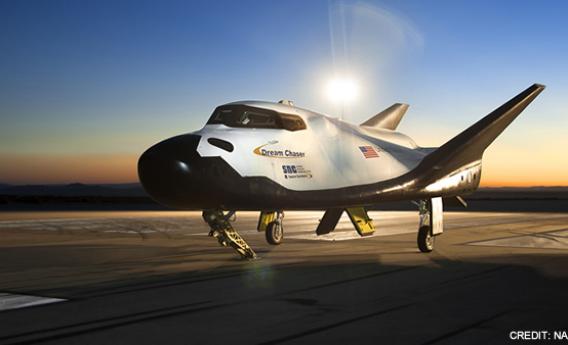Create a free profile to get unlimited access to exclusive videos, sweepstakes, and more!
Dream Chaser Spaceplane Test Flight Goes Perfectly...With One Small Exception

Last week, the Sierra Nevada Corporation (SNC) did a test drop of their spaceplane, called Dream Chaser. This was the first free-flight, approach, and landing test done for the vehicle, and, well, I have good news and bad news.
The good news is that after it was released by a helicopter, the Dream Chaser's computer and guidance system performed admirably, keeping the vehicle on target and at the right attitude (angle to the ground). Right up until the last moment, everything went really well.
The bad news is that the left rear landing gear didnât deploy. The vehicle tipped over and swerved off the runway. It was damaged, though apparently not too badly. Officials at SNC said they can fix the vehicle and fly it again.
The company released a video showing the flight and (part of) the landing. You can see that the landing gear doesnât deploy, though the video cuts off before the vehicle veers off (theyâre holding that part pending a more thorough investigation):
All in all, this clearly wasn't an unmitigated succes, but neither was it a catastrophe. Mechanical failures like that are fixable, so I still have pretty solid hopes for this spacecraft.
The intent is for Dream Chaser to eventually be able to take astronauts to and from the International Space Station â it can carry up to seven people. It will launch on an Atlas V rocket (run by another company, the United Launch Alliance), and can land like a plane, horizontally. Iâll note it doesnât have a front landing gear, instead using a skid, and the gear used for the test flight are not what will be employed for later flights.
Right now, SNC plans to launch the first Dream Chaser into orbit in 2016 for an autonomous (uncrewed) test, and then have a piloted test flight in 2017. Assuming all goes to plan, this will make it the third private company to launch a vehicle to orbit, after SpaceX and Orbital Sciences Corporation (unless Blue Origin beats them to it).
Because I know a lot of people still harbor misconceptions about whatâs going on, let me say a few words. We are currently in a gap in time when neither the U.S. government nor an American company can launch humans into space. However, this period is coming to end soon; SpaceX may launch a crewed Dragon capsule as early as 2015. If successful, SpaceX may be able to substantially undercut the cost of a seat on a Russian Soyuz flight. Sierra Nevada will follow shortly thereafter.
The last Shuttle set wheels down in 2011. Iâll note that when Apollo was canceled, it was over eight years before the Shuttle first launched (there were a handful of flights to orbit in that time, but nothing sustainable; even counting those there was a nearly six year pause in crewed flights). This current gap is not the longest we have suffered, and I strongly suspect we wonât have to hold our breaths for too much longer.
The United States is poised to go back to space under her own power. When we do itâll be a bit different than it once was, but Iâm OK with that: Itâll be cheaper and more reliable, in large part because NASA blazed the way.
Weâre heading back to space. As Konstantin Tsiolkovsky, father of rocketry, has been quoted: The Earth is the cradle of humanity, but one cannot live in the cradle forever.














